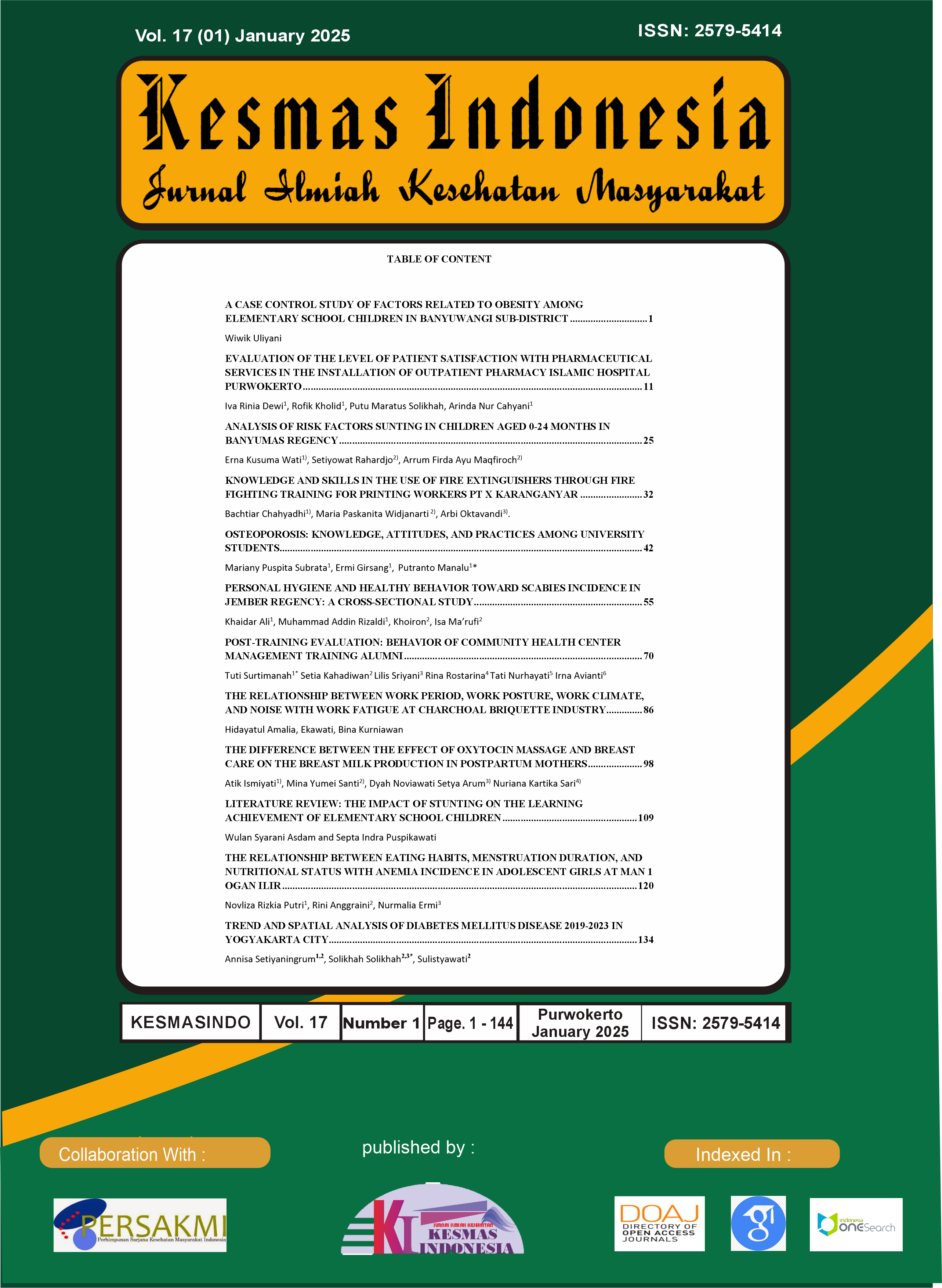THE RELATIONSHIP BETWEEN EATING HABITS, MENSTRUATION DURATION, AND NUTRITIONAL STATUS WITH ANEMIA INCIDENCE IN ADOLESCENT GIRLS AT MAN 1 OGAN ILIR
Abstract
The prevalence of anemia in adolescent girls is 32%, which affects their health, such as immune system strength and physical productivity, making the body vulnerable to health problems. Respondents sometimes eat three times a day (57), eat green vegetables (52%), eat breakfast before activities (46%), eat breakfast, lunch and dinner (52%), consume instant noodles (66%). This study aims to determine the relationship between eating habits, nutritional status, and menstruation duration with anemia incidence. This study uses a cross-sectional method with a sample of 100 eleventh-grade female students at MAN 1 Ogan Ilir. Data were collected using questionnaires, biomedical data were measured using a hemoglobin (Hb) meter (easytouch), stadiometer, and digital scale. Data analysis was performed univariate and bivariate using the chi-square statistical test. The results showed that there were 11 respondents who experienced anemia. The results showed that the variables of nutritional status, menstruation duration, and menstrual cycle were not related to anemia incidence, but the eating habits variable was associated with anemia (p = 0.047; PR = 4.525; 95% CI = 1.122-18.257). There is a need for countermeasures such as maintaining a healthy diet, educating on healthy eating patterns to young women at MAN 1 Ogan Ilir, providing TTD (Iron Supplement Tablets) every month.




.png)




